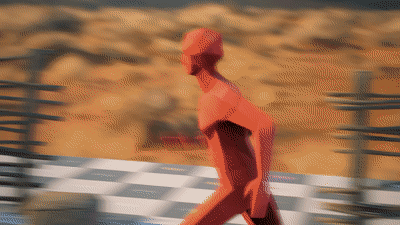Unity Technologies ships Unity 5.4
Unity’s real-time Adam demo. To accompany the release of Unity 5.4 this week, the open-source Cinematic Image Effects add-on it makes use of has been updated to support motion vectors, making motion blur easier.
Unity Technologies has officially released Unity 5.4, the latest version of its game engine and dev environment, updating its particle systems and the Cinematic Image Effects add-on; and implementing GPU instancing.
The update, previously available as a public beta, is the first major version of Unity since the switch from perpetual licences to a rental-only model earlier this year.
Improved particle controls
For artists, the key changes in Unity 5.4 are to particle effects. Particle height and width can now be controlled independently; and a new trigger module enables users to modify particle properties inside a list of colliders.
The simplest use case is to destroy particles when they strike a collider object, but Unity notes that it’s possible to modify any particle property using a custom scripting callback.
Light Probe Proxy Volumes improve lighting of particle systems
Large particle systems can also now be lit more realistically using Light Probe Proxy Volumes (LPPVs): a 3D grid of interpolated light probes inside a bounding volume with a user-determined grid resolution.
LPPVs make it possible to add a spatial gradient to probe-lit objects. Unity describes them as a “getting baked lighting information into large dynamic objects that can’t use baked lightmaps”, including particle systems.

Cinematic Image Effects add-on gets support for motion vectors
The open-source Cinematic Image Effects add-on, which provides advanced graphical effects like screenspace raytraced reflections, DoF and tonemapping, has also been updated to support motion vectors.
Suggested uses include generating more sophisticated motion blur effects, as shown in the image above.
Support for GPU instancing, improved multithreaded rendering
Under the hood, the engine now supports GPU instancing, making it possible to render large numbers of instanced objects with fewer draw calls: a feature we covered when it was previewed earlier this year.
GPU instancing is now supported on Windows (on systems supporting DirectX 11/12 with Shader Model 4.0 and up), OS X, and Linux (OpenGL 4.1 and up), as well as on PlayStation 4 and Xbox One.
Multithreaded rendering has also been improved, although Unity hasn’t put a figure on the performance gain.
According to the release notes: “Instead of building one graphics command list on the main CPU core scripts used by physics and scripts, work is reallocated to multiple CPU cores.”
Unity 5.4 also supports 2D texture arrays, allowing the GPU to treat 2D textures that share the same size and format as a single object; and implements a number of new low-level graphics features.
Build support for OpenVR devices and WebGL 2.0
VR support has been extended, with OpenVR devices like the HTC Vive now supported on top of Oculus Rift, Gear VR and PlayStation VR. Developers can build to all four types of devices through a single API.
WebGL build times have also been reduced through improved caching and the option to use pre-built runtime components. The first build is unaffected, but after that, only user code is rebuilt, reducing compilation time.
The WebGL 2.0 spec – not yet supported in browsers by default, but enablable in Chrome and Firefox – is now available as an experimental build target.
Other changes in Unity 5.4 include support for Retina displays on Mac OS X, with HiDPI support for Windows “in the pipeline”; and the integration of the cloud build system and performance reporting directly within the editor.
Pricing and availability
Unity 5.4 is available now for Windows 7 and above and Mac OS X 10.8 and above.
The software is now rental-only. Free Personal subscriptions are available to anyone earning under $100k/year. Plus and Pro subscriptions cost $35/seat/month and $125/seat/month. Read a feature comparison here.
Read a full list of new features in Unity 5.4 on Unity Technologies’ blog
